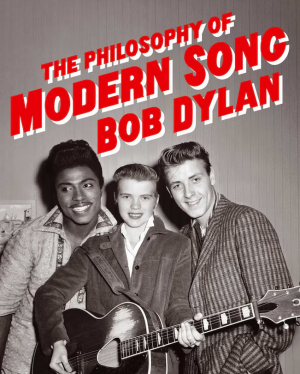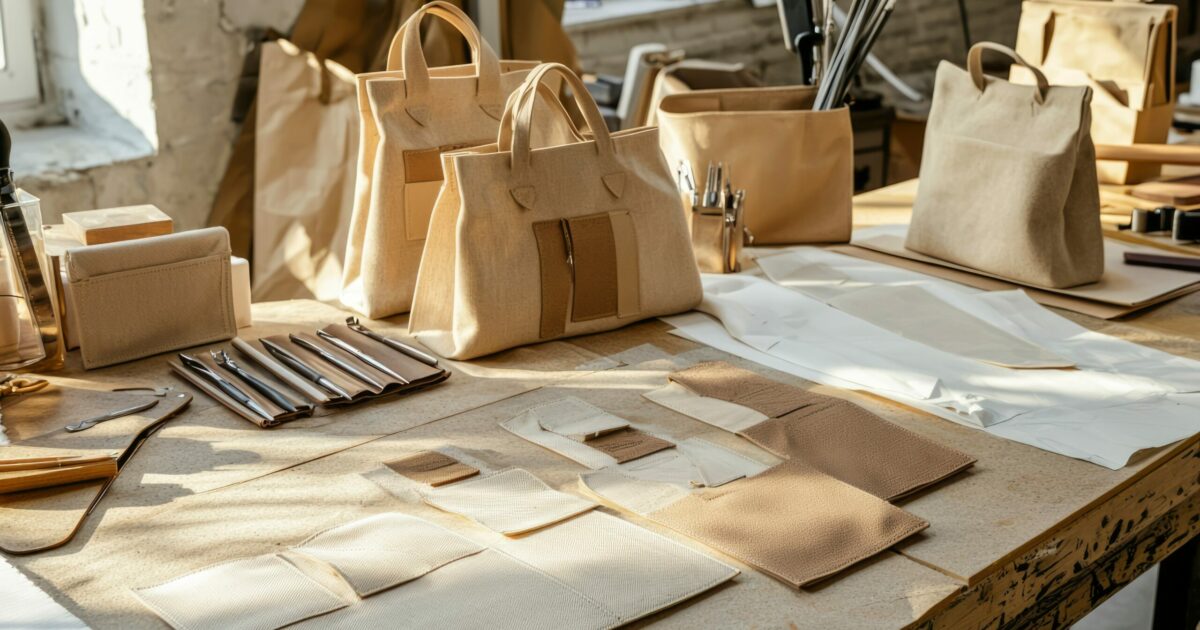L'aumento dei prezzi nei brand di lusso ha generato un boomerang, allontanando i consumatori. Migliaia di piccole e medie imprese della filiera rischiano di chiudere i battenti, con migliaia di posti di lavoro persi

www.ilfattoquotidiano.it
by Ilaria Mauri and Pietro Barabino
The dark side of luxury, designer bag manufacturers speak out: “Gucci, Prada, Fendi…a 1200 euro model pays us 25. When things go well we earn enough to survive”
In 2024, the hours of redundancy payments authorized in Italy increased by over 200%. In the Marche region, 700 companies closed their doors, another 304 in Tuscany, resulting in thousands of lost jobs. Behind these numbers are the lives of thousands of people and families: the stories of the "subcontractors" of the big fashion brands.
“In recent years, a huge mistake has been made on prices. It was a mistake to increase them so much just because it was easy.” A couple of months have now passed since the “mea culpa” of Andrea Guerra , CEO of Prada Group , revealed to the world that the king is naked. That is, that fashion is in crisis. Not so much the brands, which ultimately know how to make the numbers add up, but rather its entire productive fabric, that is, those 60 thousand companies that represent the uniqueness of the artisanal know-how of our industry, the backbone of the “ Made in Italy” that the whole world envies us . Let us not forget, in fact, that the fashion sector is the second Italian manufacturing sector after mechanics: with a turnover of almost 96 billion euros, it contributes 5% to the national GDP . The crisis has its roots in the Covid era: after the boom in sales recorded in the post-pandemic period, the big luxury brands implemented an aggressive price increase policy, with double-digit price increases that mainly affected bags, a true object of desire for millions of consumers.
Skyrocketing prices
A
Chanel Classic Flap has gone from costing
2,800 euros to
over 10,000 euros , a Lady Dior today is close to 6,000, not to mention the iconic Birkin and Kelly by
Hermès , which now cost as much as a two-room apartment in the provinces. A strategy that, on the one hand, has allowed for an increase in profit margins in the short term, but on the other has generated a
boomerang effect , alienating both “aspirational” customers and the super-rich. Yes, because, as the “cashmere king” Brunello Cucinelli has rightly pointed out, many of these rich people are businessmen who handle accounts and balance sheets, and recognize that the increase in prices is not justified by a real increase in the value of the product. The result? Sales collapsed and orders halved for producers.
In 2024, the hours of redundancy payments authorized in Italy increased by over 200%. For example, in the sector most in crisis, that of leather, hides and footwear, it has grown by 139%, three times more than that of mechanics. In clothing by 124%, in textiles by 74. In the last year alone,
700 companies have closed their doors in the Marche , another
304 in Tuscany , with the consequence of thousands of lost jobs.
The government had to put 110 million euros on the table to finance the CIG, first until December 31 and then extended to the end of January. And now that it has expired, the consequences are already being seen:
Sud Salento srl, a shoe factory that worked exclusively for Gucci, on February 5 informed its staff that it had started a collective dismissal procedure for all its 120 employees.
Confindustria Moda and
the National Chamber of Fashion have opened a table with the Ministry of Business and Made in Italy, which has announced that it has allocated 250 million euros to the sector for 2025: "We must not lose any of these companies or any of their employees", said the president of Cnmi Carlo Capasa, launching an appeal "to all political forces and to the Government".
The numbers of the crisis
The leather goods sector that produces for giants such as
Kering and
LVMH is the one suffering the most , having seen its turnover fall by 8.4% and exports by 9.7% in the first nine months of 2024. “2024 ends with
worrying data for the sector,” confirms
Claudia Sequi , president of Assopellettieri and Mipel. “In the first nine months
we have lost over a billion euros in turnover compared to 2023, over 100 companies have closed and
1,300 jobs have been lost . The sharp slowdown in demand for luxury goods has hit hard, considering that a significant part of Italian production is destined for international brands.” Sequi explains that the sector is therefore facing not only a cyclical crisis but also structural pressures: “The sector is closely linked to exports, which suffered a 9.7% drop in the first nine months of 2024, with significant declines in some key markets such as China
(-28%) and
South Korea (-10.9%) .”
The textile-clothing sector is experiencing an equally complex situation. The sector is made up of approximately 40,000 companies that employ over 400,000 workers and, according to estimates by Confindustria Moda, closed 2024 with
a -6.1% drop in turnover, equal to 59.8 billion euros . In the third quarter, 67% of companies recorded a drop in turnover compared to the same period in 2023, with 12% suffering contractions greater than 20%. Industrial production, according to
Istat data , recorded a drop of 16.1% in the first nine months of 2023. Exports, which usually drive the sector, suffered a contraction of 8.5%. The use of social safety nets is also a cause for concern:
26 million hours of redundancy payments in the first 9 months of 2024 , with an increase of
139.4% compared to 2023.
How the subcontractor system works
Behind these aseptic and, let's say, even a little repulsive numbers, there are the lives of thousands of people and families. This is why we contacted several owners of companies in
Valdarno and the provinces of
Arezzo and
Florence who operate as "
subcontractors " for the big fashion brands. They produce bags, belts, shoes and other luxury leather goods on behalf of those who have "direct" commissions with the brands of the French groups
Kering and
Lvmh . They agreed to tell us about their situation, on condition of anonymity. It is not fear that holds them back, but the certainty that their companies would suffer repercussions. Yes, because the big brands that sign the collections often do not have their own production plants, or at least not enough to satisfy the entire demand. For this reason, they rely on a network of external companies, the subcontractors, precisely. These subcontractors are companies, often small or medium-sized, highly specialized in specific phases of the process: cutting, sewing, embroidery, dyeing, assembly and more.
They operate “on behalf of third parties” , that is, they produce products on behalf of other brands, based on specific contractual agreements. The commissioning brand provides the subcontractors with models, materials (in many cases) and detailed technical specifications, dictating rigorous quality standards. The subcontractors, within their own factories and with their own workforce, are responsible for transforming these inputs into finished products. The commissioning brand maintains constant control over quality, carrying out checks both during the production process and on the final product. Once the checks have been passed, the products are delivered to the brand, which distributes them through its own channels: single-brand stores, authorised retailers or e-commerce platforms. The subcontractor, in turn, is remunerated according to the agreements stipulated. This system offers luxury brands significant advantages at the expense, needless to say, of entrepreneurs. First of all, it guarantees flexibility, allowing them to increase or reduce production based on market fluctuations without having to bear the fixed costs of owned production plants and, above all, reducing the cost of labour. Not only that: it also allows it to
boast the prestigious “Made in Italy” brand,now become a brand thanks to the experience and know-how of companies highly specialized in certain processes. The subcontractors, for their part, especially the smaller ones, find themselves in a position of strong dependence on the clients, with the risk of suffering heavy repercussions in the event of changes in orders. A further criticality is linked to the supply chain: sometimes,
the subcontractors are in turn "empty boxes" that subcontract to laboratories, often Chinese, where the worst working conditions occur, making the supply chain opaque and difficult to control.
“A 1200 euro Gucci bag pays us 25”
The first entrepreneur we interview has a company with just over twenty employees in the Florence area. He has been working as a subcontractor for luxury brands for over twenty years, producing high-quality accessories. “
We no longer have orders, or at least not enough to cover costs . Until a few years ago they paid us badly, but at least there was work. Now, not only do they not want to pay more, they are even taking away our orders. They tell us that this crisis will only last a couple of months, but I have heard people close to the unions talk about recovery in 2026. In the meantime, many companies like mine have already closed, and those who resist are forced to go into heavy debt”. His company, like many others, is heavily dependent on a single large brand: “
90% of our work is entrusted to a single customer . We do not work directly for them, but for an intermediary who takes care of the initial processing of the materials. The next phases are left to us: assembly, sewing, fitting. But it is always the brand that controls how we work, whether we are compliant, whether we respect the laws, whether we pay our employees regularly. The only thing they don't control is how much we are paid. That's our problem. They simply tell us: '
This is the price, take it or leave it'. ” The economic pressure is unsustainable. “
Gucci, Prada, Fendi : they ask us for ever higher quality, but they pay us the same, if not less
. They want to reach the level of Hermès , they are targeting the so-called VICs, the 'very important clients', those who spend 50,000 euros a year on fashion accessories. In the meantime, however,
we are paid starvation wages. A model now sold for 1,200 euros that you can see on the Gucci website, for example, was paid 25 euros to the person producing it”.
“The luxury giants? We have a Fiat 500, they have a Maserati”
The second craftsman we hear from runs a leather goods shop in Valdarno, with about thirty employees. In recent years, he says, he has been forced to go into debt to keep the company open: “I found myself in an absurd situation. Over the years I had to buy new machines to meet the standards that the brands impose on us, but
orders have decreased and I can’t even cover the installments of the loans . I had no choice. If I closed, I wouldn’t even have the money to pay the severance pay to the employees. And this is the situation in which many craftsmen like me find themselves: we work to avoid bankruptcy”. The problem, he explains, is not only economic, but also human. “This company is my life. I’ve been working there for more than twenty years. And it’s not just mine: it belongs to my employees, to their families. I know that if I close I won’t just lose my job, I’ll leave dozens of people on the street.
Brands know this, and it is precisely on this fear of ours that they exploit. They want to starve us, but without breaking us completely. As long as they can exploit us, they will do so.” In the last two years, he has lost almost a third of his workforce: “In 2022, I had 39 employees. Today I have 28, and in the next few months I will have to fire another four or five. I had to put some on redundancy in January and February because there are no orders. But for us artisans, the redundancy lasts only twelve weeks, while industry is entitled to it for much longer periods. How can I survive in these conditions?” These small-medium entrepreneurs feel abandoned and treated differently by the State compared to larger industrialists, those who take “direct” commissions that are then passed on to them. The proportions, he explains, are merciless. “My company has a turnover of around one million euros, with a profit of 100,000 euros. Direct intermediaries who work for the big brands have a turnover of 22-24 million, with profits of 2-3 million. The difference is enormous. We
have a Fiat 500, they have a Maserati .”
“Sometimes it seems like we only breathe when they decide to let us breathe”
The third entrepreneur, owner of a small company that produces luxury belts and bags, tells another side of the crisis. Once upon a time, he explains, brands relocated abroad. “They went to Romania, China, other countries where labor was cheaper. Now they have changed strategy. They keep
production in Italy so they can write 'Made in Italy' on the products, but they pay us as if we were in Romania. By doing so, however,
they destroy the artisanal supply chain ”. The consequences are serious not only for the companies, but also for the territory: “Leather goods are the heart of the economy here, between Florence and Arezzo. Bags, shoes, belts: there are hundreds of small companies that employ thousands of people. In the last two years, in the Florence district alone, more than a hundred companies like mine have closed. This impact is devastating”. The relationship with the big brands is marked by a total lack of bargaining power: “They decide everything. They want the product to be perfect, but without paying more for it. They want us to be compliant with everything, but they don’t control how much we get paid. They want the most for the least. And we are the lowest on the list.
When things go well, we earn enough to survive. When things go badly, we get into debt, hoping that something will change. Sometimes it seems like we only breathe when they decide to let us breathe.”
The “Gucci case” in Puglia
From Tuscany to
Puglia , the situation is the same. The
Sud Salento srl shoe factory, with offices in Gagliano del Capo, Alessano and Corsano, has announced
the collective dismissal of 120 employees out of a total of 335. The decision, communicated yesterday, February 5, is a direct consequence of the drastic drop in orders from Gucci, the company's only client. “
Kering [the group that owns Gucci, ed.] has slowed down production considerably and we have suffered the impact,” Gabriele Abaterusso, the company's administrative manager and mayor of Patù, explained to Corriere della Sera. “Only a year ago we were expanding, now unfortunately we find ourselves in the opposite situation.” The crisis, which began at the end of 2023, has particularly affected the assembly and finishing lines of the
Gagliano and
Corsano factories . The turnover of these departments
has collapsed from 10 million euros in 2022 to just 4.2 million in 2024. The company has attempted to avoid layoffs by resorting to redundancy payments, but the cost, explains Abaterusso, has become “exorbitant”. “These 120 people have been on redundancy payments for 15 months. If we had continued, we would have compromised the company’s capacity”. Abaterusso underlines that the crisis is linked both to external factors, such as the slowdown in global demand for luxury and the instability of the Russian and Chinese markets, and to internal dynamics within the Kering group. It is no coincidence, in fact, that the news comes at the same time as the change in the brand’s creative direction: Gucci announced on Thursday that
Sabato De Sarno will no longer be its creative director .
And 2025?
So what to expect for the year that has just begun? Forecasts for 2025 remain shrouded in uncertainty. 74% of entrepreneurs in the textile-clothing sector expect a recovery only during the course of the year, while 19% postpone it to 2026.
Only a timid 7% see signs of recovery already underway. The evolution of the geopolitical scenario will be crucial, with the two conflicts in Ukraine and Israel but above all with the measures of the new
Trump administration on
duties . More grand announcements than facts, for now. The OECD estimates a +4.7% for Chinese GDP and a +2.4% for the US one, while the Eurozone should accelerate, reaching a +1.3%.
For leather goods, in particular, Claudia Sequi predicts an improvement starting from the second half of 2025, but much will depend on the trend of global demand, the resolution of geopolitical tensions and the government's support policies. "To relaunch the sector, it will be essential
to work on a new industrial and fiscal policy that makes our companies more competitive", concludes Sequi. "It will be necessary
to rethink the system to attract the production of brands in the accessible luxury segments, today often carried out in other countries where quality and sustainability are well below the Italian standard"


